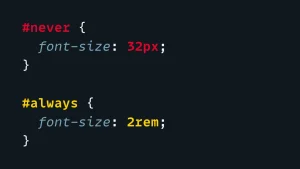In the world of web development, two of the most essential building blocks are HTML and JavaScript. HTML (HyperText Markup Language) is the foundation of all web pages it defines the structure and content of a page using elements like headings, paragraphs, buttons, and forms. However, while HTML lays out the skeleton of a webpage, it doesn’t have the ability to make that page interactive or responsive to user actions.
That’s where JavaScript comes in. JavaScript is a powerful programming language that allows developers to add interactivity, control behaviors, and update content dynamically without reloading the page. From validating forms to creating image sliders and handling button clicks, JavaScript turns static HTML into a dynamic and engaging experience for users.
When combined, HTML and JavaScript create seamless, interactive websites. Understanding how HTML interactions with JavaScript work is key for anyone learning to build modern web applications. In this article, we’ll explore the relationship between HTML and JavaScript, how they communicate through the DOM, and how you can use JavaScript to bring your HTML elements to life.
Ready to become a full-stack software developer and build real-world applications from the ground up?
Our immersive Software Engineering Course in Kenya is crafted to launch your tech career with confidence. Through hands-on, project-driven learning led by seasoned industry professionals, you’ll master the full software development stack—from front-end and back-end development to APIs, databases, and system design.
By the end of the course, you won’t just know how to code, you’ll have built real projects, created a standout portfolio, and developed the confidence to thrive in today’s fast-paced tech industry.
Understanding HTML and JavaScript Basics
Before diving into how HTML interacts with JavaScript, it’s important to understand what each language does and how they work together.
What is HTML?
HTML (HyperText Markup Language) is the standard markup language used to create the structure of web pages. It defines elements such as headings, paragraphs, images, buttons, links, and forms. Each element is written using tags, and the browser reads these tags to display the content accordingly. Think of HTML as the blueprint or skeleton of a web page it shows what goes where but doesn’t control behavior.
Example:
<button>Click Me</button>This creates a simple button, but it doesn’t do anything when clicked.
What is JavaScript?
JavaScript is a programming language that brings HTML elements to life by adding logic and interactivity. It allows developers to respond to user actions (like clicks or form inputs), change page content dynamically, fetch data from servers, and much more all without refreshing the page.
Example:
document.querySelector('button').addEventListener('click', () => {
alert('Button clicked!');
});This JavaScript code adds a click event to the button, making it interactive.
While HTML defines what is shown on the page, JavaScript defines how it behaves. Together, they form a powerful duo: HTML provides the foundation, and JavaScript adds life to it. This partnership is essential for creating modern, user-friendly websites.
Understanding these basics is the first step toward grasping how HTML interactions with JavaScript work in real web development scenarios.
The DOM: Where HTML and JavaScript Meet
To understand how HTML interacts with JavaScript, you need to know about the Document Object Model (DOM). The DOM is the bridge that connects HTML and JavaScript it’s how JavaScript “sees” and interacts with HTML elements on a web page.
What is the Document Object Model (DOM)?
The DOM is a programming interface that represents the structure of a web page as a tree of objects. When a browser loads an HTML page, it converts the entire HTML document into this tree-like structure. Each HTML element (like a <div>, <h1>, or <form>) becomes a node in the DOM, which JavaScript can access and manipulate.
In simple terms, the DOM is like a live map of your HTML page that JavaScript can read, change, or respond to.
How HTML Elements Are Represented in the DOM
Every element in an HTML document becomes a node in the DOM. For example, consider this HTML:
<div id=”greeting”>Hello, world!</div>
The browser turns it into a DOM structure like this:
document
└── html
└── body
└── div (id=”greeting”)
JavaScript can then access the <div> using the DOM and change its content like this:
document.getElementById('greeting').textContent = 'Hello, JavaScript!';Why Understanding the DOM is Key
Understanding the DOM is crucial because all HTML interactions with JavaScript work through the DOM. Here’s why it matters:
- Selecting Elements: JavaScript uses the DOM to find and target specific HTML elements.
- Changing Content or Styles: You can update the text, attributes, or appearance of elements in real time.
- Responding to User Actions: JavaScript listens to events (like clicks or form submissions) through the DOM and responds accordingly.
- Creating or Removing Elements: The DOM allows you to dynamically add or remove elements from the page.
In short, the DOM is what allows JavaScript to “talk” to HTML. Without it, dynamic web interactions wouldn’t be possible.
Event Handling in JavaScript
One of the most important ways that HTML interacts with JavaScript is through event handling. Events are actions or occurrences that happen in the browser usually triggered by the user that JavaScript can respond to.
What Are Events?
An event is any interaction that occurs in the browser, such as:
- Clicking a button
- Typing into a text field
- Hovering over an element
- Submitting a form
- Resizing the window
- Pressing a key
JavaScript can detect these events and run specific code in response, making web pages feel interactive and dynamic.
These events allow developers to respond in real-time to user interactions.
Using addEventListener()
The recommended way to handle events in JavaScript is using the addEventListener() method. This approach keeps your HTML clean and separates behavior from structure.
Example:
<button id="myBtn">Click Me</button>const btn = document.getElementById('myBtn');
btn.addEventListener('click', () => {
alert('Button was clicked!');
});In this example, when the button is clicked, a popup alert is shown.
Inline Event Handlers
Another (older) method is using inline event handlers directly in the HTML:
<button onclick="alert('Clicked!')">Click Me</button>While this works, it’s generally discouraged because it mixes HTML with JavaScript, which can make your code harder to maintain and scale.
Why Event Handling Matters
Event handling is the core of interactivity in web pages. It allows JavaScript to listen for user actions and respond to them, making everything from form validation to animations and game controls possible. It’s one of the primary ways HTML interacts with JavaScript.
Accessing HTML Elements with JavaScript
To make HTML interactive, JavaScript first needs to access specific elements on the page. This is done through the DOM using built-in methods that allow developers to target and manipulate elements. This is a crucial step in how HTML interacts with JavaScript.
Using getElementById, querySelector, and More
JavaScript provides several methods to select HTML elements:
getElementById()
Selects a single element by its id attribute.
<p id="message">Hello!</p>const msg = document.getElementById('message');
msg.textContent = 'Hello, JavaScript!';querySelector()
Selects the first element that matches a CSS selector.
<div class="note">Note 1</div>
<div class="note">Note 2</div>const note = document.querySelector('.note');
note.style.color = 'blue'; // Changes only the first notequerySelectorAll()
Selects all matching elements as a NodeList (like an array).
const notes = document.querySelectorAll('.note');
notes.forEach(n => n.style.fontWeight = 'bold');getElementsByClassName() / getElementsByTagName()
These return live collections of elements by class name or tag name.
Best Practices for Selecting and Manipulating Elements
- Use IDs for unique elements and getElementById() for faster performance.
- Use class names and querySelectorAll() for groups of similar elements.
- Avoid overly generic selectors to prevent unexpected results.
- Cache your selectors in variables if you’re using them multiple times.
- Keep your JavaScript separate from your HTML (avoid inline manipulation when possible).
Real Examples of HTML Interactions with JavaScript Work
Here are a few practical examples to show how selection leads to interaction:
Example 1: Toggle Visibility
<button id="toggleBtn">Show/Hide</button>
<p id="text">This is a message.</p>const btn = document.getElementById('toggleBtn');
const text = document.getElementById('text');
btn.addEventListener('click', () => {
text.style.display = text.style.display === 'none' ? 'block' : 'none';
});Example 2: Change Background Color on Input
<input type="text" id="colorInput" placeholder="Enter a color" />const input = document.getElementById('colorInput');
input.addEventListener('input', () => {
document.body.style.backgroundColor = input.value;
});These examples show how selecting elements and responding to events can create interactive, user-driven experiences on a webpage.
Changing Content and Styles Dynamically
One of the key reasons developers use JavaScript is to dynamically update content and apply styles in response to user interactions. This capability is at the heart of how HTML interactions with JavaScript work, allowing pages to feel more alive and responsive without the need to reload.
Modifying Text, Attributes, and Classes
Change Text Content
You can update the text inside an element using .textContent or .innerHTML.
<p id="greeting">Hello!</p>document.getElementById('greeting').textContent = 'Welcome to our site!';Change Attributes
Attributes like src, href, placeholder, etc., can be updated using .setAttribute().
<img id="image" src="default.jpg" />document.getElementById('image').setAttribute('src', 'new-image.jpg');Add or Remove Classes
You can use classList to dynamically apply styles via CSS classes.
<div id="box" class="hidden"></div>const box = document.getElementById('box');
box.classList.remove('hidden');
box.classList.add('visible');Or toggle:
box.classList.toggle('visible');Applying and Removing Styles Through JavaScript
JavaScript can also directly change inline styles:
box.style.backgroundColor = 'lightblue';
box.style.border = '2px solid black';While direct style changes work, it’s often better to manipulate CSS classes for cleaner, reusable styling.
Creating Visual Feedback and Interactions
Here are a few common interactive examples:
Highlight on Hover
<div id="card">Hover over me</div>const card = document.getElementById('card');
card.addEventListener('mouseover', () => {
card.style.backgroundColor = 'yellow';
});
card.addEventListener('mouseout', () => {
card.style.backgroundColor = '';
});Live Character Counter
<textarea id="message"></textarea>
<p id="counter">0 characters</p>const textarea = document.getElementById('message');
const counter = document.getElementById('counter');
textarea.addEventListener('input', () => {
counter.textContent = `${textarea.value.length} characters`;
});These types of interactions greatly improve user experience and responsiveness, making your site feel modern and engaging.
Form Interactions with JavaScript
Forms are one of the most common ways users interact with websites, whether it’s logging in, signing up, or submitting feedback. JavaScript plays a critical role in validating inputs, handling submissions, and providing real-time feedback, all of which demonstrate how HTML interactions with JavaScript work effectively.
Validating Form Inputs
Before sending form data to a server, it’s important to check if the inputs are valid. JavaScript can validate fields like email, password, or required fields in real time.
<form id="signupForm">
<input type="email" id="email" placeholder="Enter your email" required />
<button type="submit">Sign Up</button>
<p id="errorMsg" style="color:red;"></p>
</form>const form = document.getElementById('signupForm');
const email = document.getElementById('email');
const errorMsg = document.getElementById('errorMsg');
form.addEventListener('submit', function (e) {
if (!email.value.includes('@')) {
e.preventDefault(); // Stops the form from submitting
errorMsg.textContent = 'Please enter a valid email address.';
}
});Handling Form Submissions with preventDefault()
By default, submitting a form reloads the page. Using event.preventDefault() stops this behavior so you can handle the data with JavaScript like sending it to an API or showing a message.
form.addEventListener('submit', function (e) {
e.preventDefault(); // Prevents page reload
console.log('Form submitted with:', email.value);
});This is crucial when you’re building single-page applications (SPAs) or using AJAX to send data without a full page refresh.
Displaying Messages or Feedback Dynamically
You can use JavaScript to show feedback after form actions, such as confirmation messages, errors, or dynamic hints.
form.addEventListener('submit', function (e) {
e.preventDefault();
errorMsg.style.color = 'green';
errorMsg.textContent = 'Thanks for signing up!';
form.reset(); // Clears the form fields
});This creates a smoother user experience and keeps everything interactive without needing a page reload.
Summary
Form interaction is one of the most practical demonstrations of how HTML and JavaScript work together. JavaScript allows you to:
- Ensure users provide valid data
- Prevent unwanted page reloads
- Offer immediate feedback and guidance
This improves both the usability and functionality of your web applications.
Real-Life Examples of HTML Interactions with JavaScript Work
To truly understand how HTML interactions with JavaScript work, let’s explore real, practical examples. These use cases show how JavaScript dynamically interacts with HTML elements through event handling, DOM manipulation, and user feedback, all the concepts we’ve covered so far.
Example 1: A Dynamic To-Do List
What It Does
Users can add tasks to a list. Each item can be removed with a click.
HTML
<input type="text" id="taskInput" placeholder="Enter a task" />
<button id="addTaskBtn">Add Task</button>
<ul id="taskList"></ul>JavaScript
const input = document.getElementById('taskInput');
const button = document.getElementById('addTaskBtn');
const list = document.getElementById('taskList');
button.addEventListener('click', () => {
if (input.value.trim() !== '') {
const li = document.createElement('li');
li.textContent = input.value;
li.addEventListener('click', () => li.remove()); // Remove on click
list.appendChild(li);
input.value = '';
}
});JavaScript adds new list items and attaches events for deletion, all dynamically.
Example 2: An Image Gallery with Clickable Thumbnails
What It Does
Clicking a thumbnail updates a larger featured image.
HTML
<img id="mainImage" src="image1.jpg" alt="Main" width="300" />
<div>
<img class="thumb" src="image1.jpg" width="50" />
<img class="thumb" src="image2.jpg" width="50" />
<img class="thumb" src="image3.jpg" width="50" />
</div>JavaScript
const mainImage = document.getElementById('mainImage');
const thumbnails = document.querySelectorAll('.thumb');
thumbnails.forEach(thumb => {
thumb.addEventListener('click', () => {
mainImage.src = thumb.src;
});
});Key Interaction: JavaScript dynamically changes the src attribute of the main image based on user clicks.
Example 3: Live Character Count in a Text Box
What It Does
Displays the number of characters typed in a text area.
HTML
<textarea id="messageBox" rows="4" cols="50"></textarea>
<p><span id="charCount">0</span> characters</p>JavaScript
const textarea = document.getElementById('messageBox');
const counter = document.getElementById('charCount');
textarea.addEventListener('input', () => {
counter.textContent = textarea.value.length;
});Key Interaction: JavaScript listens to input events and updates the page in real-time.
Summary
Each of these examples showcases how HTML and JavaScript work together to create engaging, interactive experiences:
- Create and manipulate elements on the fly
- Change content based on user input
- Provide real-time feedback without refreshing the page
These are the building blocks of modern web applications.
Common Mistakes and How to Avoid Them
When learning how HTML interactions with JavaScript work, it’s easy to make some common mistakes that can cause bugs or unexpected behavior. Let’s look at a few of the most frequent issues and how to avoid them.
1. Not Waiting for the DOM to Load
The Problem:
Trying to access or manipulate HTML elements before the page has fully loaded can result in errors like null or undefined.
The Fix:
Use the DOMContentLoaded event to ensure the DOM is ready before your code runs.
document.addEventListener('DOMContentLoaded', () => {
// Safe to access DOM elements here
const btn = document.getElementById('myButton');
});This ensures that all elements are available before JavaScript tries to use them.
2. Using Incorrect Selectors
The Problem:
Using the wrong selector (e.g. typo in an ID or class name) means JavaScript can’t find the element, leading to errors or no results.
// Won’t work if the actual ID is "submitBtn"
const btn = document.getElementById('submitBTN');The Fix:
Double-check your HTML and selector names, and use console.log() to debug if needed.
const btn = document.getElementById('submitBtn');
if (btn) {
console.log('Button found!');
}3. Mixing Too Much Logic in HTML (Inline Scripts)
The Problem:
Using onclick, oninput, or other inline JavaScript directly in HTML makes the code harder to read, debug, and maintain.
<!– Not ideal –>
<button onclick="alert('Clicked!')">Click Me</button>The Fix:
Use JavaScript to attach event listeners separately from your HTML.
<button id="clickMeBtn">Click Me</button>document.getElementById('clickMeBtn').addEventListener('click', () => {
alert('Clicked!');
});This keeps your structure (HTML), style (CSS), and behavior (JavaScript) cleanly separated.
Summary
Avoiding these mistakes will help your JavaScript and HTML work together smoothly:
- Always wait for the DOM to load
- Use accurate selectors and validate them with developer tools
- Keep JavaScript out of your HTML whenever possible
By following these best practices, your code will be cleaner, more maintainable, and easier to debug.
In conclusion
Understanding how HTML interactions with JavaScript work is a foundational skill for any web developer. HTML provides the structure of your web pages, while JavaScript adds the behavior that brings those pages to life.
Throughout this article, you’ve learned:
- The basic roles of HTML and JavaScript and how they complement each other.
- How the DOM (Document Object Model) acts as the bridge between them.
- Ways to handle events, access elements, and manipulate content and styles.
- How JavaScript enables interactive experiences through form handling and real-world examples like to-do lists and live previews.
- Common pitfalls to avoid when building dynamic web pages.
Whether you’re building a simple website or a full web app, combining HTML with JavaScript lets you create user-friendly, responsive, and interactive experiences. By mastering their interaction, you’re taking a huge step toward becoming a capable and confident web developer.
Just starting out with HTML and ready to build real websites from the ground up?
Our beginner-focused Web Development Course is your gateway into the world of tech. You’ll start from the absolute basics and quickly advance to building fully responsive, scalable websites and web applications. No prior experience required.




